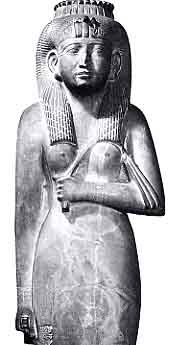HistoryThe Kushite Conquest of EgyptThe official date for the Kushite conquest of Egypt is not definitely decided. However it is known that Kush had exercised political control over Egypt as early as the ninth century BC. During this period, Lower Egypt was ruled by a group of Libyan kings, who were always on the fight over power allocation. Those Libyans originally immigrated to Egypt in the twelfth century BC.1 Then, due to their expertise in war, some of them ended up taking important positions in the Egyptian military.
Starting from the 22nd Dynasty, when Egypt was already weakening, some of these Libyan militants claimed the official right over the kingship of Egypt.2 The result was political and social fragmentation allover the country. The Kushites took advantage of the deteriorating situations in Egypt and exercised political control. Evidence suggests that the eleven Libyan kings, who were ruling Egypt at the time, were essentially puppets for the Kushite state. The Libyan kings ruled under superficial titles while the actual seat of power was in Sudan. During the eighth century the Libyan kings rebelled against the Kushite control and wanted to demolish the Cult of Amon at Thebes and replace it with their Lower Egyptian Cult of Hermopolis, thus proclaiming independence.3 Since the Kushites were followers of the Amon cult, the Thebans appealed to the Kushites for help. In response, the Kushite pharaoh Piankhi, successor and brother of Kashata, invaded Lower Egypt; that is in about 728 BC. He crushed the rebelling armies of Tefnakht (King of Sais) and Oskorn (King of Tanis), the strongest and most influential of the Libyan kings in Lower Egypt. In 759 BC, Kashata (760-747 BC),4 the pharaoh of Kush after Alara, invaded and occupied Upper Egypt with his armies. At the time the capital of Upper Egypt was Thebes, which was also the main center for the Cult of Amon. Around the same year, Kushite Pharaoh Piankhy carried extensive military campaigns and reoccupied Lower Egypt. Then, he then pronounced himself as the Pharaoh of both Lower and Upper Egypt. On the Victory Stela, from Napata, Piankhy recorded the circumstances surrounding his victory over the Egyptians, including the taking of Memphis. On the stela, he boasts of his military victories: "Forward Against it! Mount the walls! Penetrate into the houses across the river!' Thus Memphis was taken by a flood of water. Multitudes were slain therein or brought as living captives to his Majesty."5 Piankhy offered forgiveness to the Libyan kings on the condition that they surrender their authorities to Kush. Following the surrender of the Libyan kings, Piankhy returned to Sudan and continued to rule the whole of Egypt from his seat of power in Sudan. A Kushite military occupied Egypt to ensure the foregoing of his authority.
During the hundred years of ruling Egypt, Kush had extensively interacted with, and influenced, the politics, economy, and cultures of the Near East and North Africa. The impact of such interactions is still waiting further research. In about 720 BC, the Assyrians under King Sargon conquered much of southwest Asia. Their armies attacked and sacked what is known as the Brook of Egypt, east of the Sani. Eventually, Oskoron (a previously Libyan ruler who fought Piankhy and was forgiven and appointed by Piankhy as a watchdog), launched a massive military campaign to face Sargon.
Edited: Feb. 2009. |



